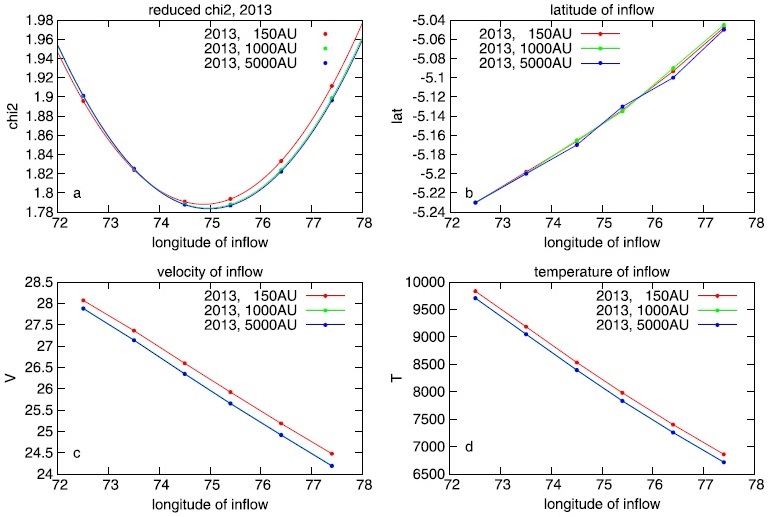
by McComas et al.
Abstract: The Interstellar Boundary Explorer (IBEX) has been directly observing neutral atoms from the local interstellar medium for the last six years (2009–2014). This paper ties together the 14 studies in this Astrophysical Journal Supplement Series Special Issue, which collectively describe the IBEX interstellar neutral results from this epoch and provide a number of other relevant theoretical and observational results. Interstellar neutrals interact with each other and with the ionized portion of the interstellar population in the "pristine" interstellar medium ahead of the heliosphere. Then, in the heliosphere's close vicinity, the interstellar medium begins to interact with escaping heliospheric neutrals. In this study, we compare the results from two major analysis approaches led by IBEX groups in New Hampshire and Warsaw. We also directly address the question of the distance upstream to the pristine interstellar medium and adjust both sets of results to a common distance of ~1000 AU. The two analysis approaches are quite different, but yield fully consistent measurements of the interstellar He flow properties, further validating our findings. While detailed error bars are given for both approaches, we recommend that for most purposes, the community use "working values" of ~25.4 km s−1, ~75.7 degree ecliptic inflow longitude, ~ −5.1 degree ecliptic inflow latitude, and ~7500 K temperature at ~1000 AU upstream. Finally, we briefly address future opportunities for even better interstellar neutral observations to be provided by the Interstellar Mapping and Acceleration Probe mission, which was recommended as the next major Heliophysics mission by the NRC's 2013 Decadal Survey.
